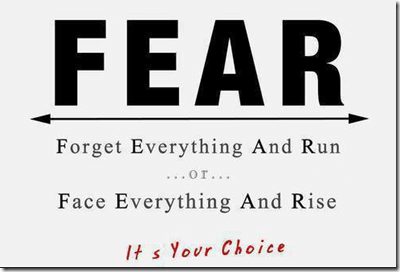“When the water starts boiling it is foolish to turn off the heat.” – Nelson Mandela. Another great article by Dr Robert Long to stir the pot! – If you liked this article then you should read the whole series: CLICK HERE.
Thanks to James Parkinson from
www.safety-consultant.com.au for sharing the image
Anxiety and Fear Professionals
There are times when I think that the term Safety Professional should be swapped for the expression Anxiety and Fear Professional.
Suzie is an art teacher and has always been creative, motivating the most amazing work from her students. Her own art work is exhibited nationally. Suzie and I were chatting last week about innovation in teaching when she informed me: ‘I don’t do that anymore, OHS”. My jaw fell to the ground and after some questioning, I discovered that her school had been visited by a self-proclaimed ‘expert’ in safety. I have never heard of this person before, but apparently this person specialises in safety in schools. I found out later that this ‘expert’ had no qualifications in safety but a degree in social work.
I get surprised by the number of self-proclaimed experts in safety who hold no qualifications or only minimum qualifications (Cert IV) in safety. What makes it worse, gullible people and organisations such as Suzie’s school, don’t even ask to see credentials or check referees. They just take these self-proclaimed ‘experts’ at their word, attracted by slick marketing and Neurolinguistic Programming (NLP) tactics, and are impressed because the ‘expert’ can talk fear and gobbledygook about legislation and standards.
Following this so-called ‘experts’ presentation on safety, every teacher at the school was shuddering in fear and anxiety about every safety responsibility and possibility in their work. Now whilst I think teachers need to consider risk in what they do, the production of excessive fear and anxiety about risk is destructive. The ‘expert’ presentation to the teachers was designed to generate a sense of ‘fear ignorance’ about risk in the audience, grooming for more follow up consultation. What followed?
The teachers at the school urgently began making their teaching practice as passive and ‘safe’ as possible limiting outdoor and ‘risky’ activities, eg. regulating use of scissors, pre-setting up work that involved knives, packing away anything that could be deemed unsafe, banning camps, excursions, doubling playground duty and so on. What a wonderful recipe for negativity and non-learning in a school community.
All the research in medical and neuroscience tells us that anxiety and fear are not good for you. Excessive anxiety and fear actually makes you sick, continuous anxiety and fear creates dis-stress, it puts pressure on your immune system and shuts down key body functions. Excessive anxiety and fear register as key indicators in many psychological disorders.
Why is it then that so many safety people believe that the strategy of shock and horror, fear and anxiety are successful? Where is the research to show that this strategy generates safety ownership and long-term learning? Why is it that so much so called ‘safety training’ is about ‘war stories’ and fear to follow legislation? Why do people think that tactics of shock, awe, fear and anxiety are motivational? How do accidents of others motivate change? Where is this demonstrated?
There was a series of ads on TV by the regulator which had the strategy of ‘be safe of we’ll catch you out’. The basic premise of the ad series was that the regulator was the police. One ad showed the nonsense situation of people cleaning up the worksite for the arrival of the regulator, making sure everything was ‘on show’. So, what the series of ads portrayed was the abnormality of the worksite. In other words, its only when the police around that we display safety ownership.
The promotion of ‘safety cosmetics’ as promoted in this ad series ignores all we know from socialpsychology about ‘gain framing’, ‘pitching’ and ‘priming’ messages. The ad series, which is now thankfully off the screen, simply more deeply entrenched non-sensical myths about ownership, risk and learning.
A culture of fear and anxiety in organisations (usually fostered by psychological bullying and assault) is counter productive, drives minimalist behaviour and creates relationship paralysis. The emphasis on strategy of ‘safety abnormality’ promotes short-term anxiety but does nothing to promote long-term change, learning and ownership.
The research shows that the misguided tactic of the one off shock presenter who was mangled in an accident, has an effect for about 6 weeks. After 3 months most shock and fear campaigns have totally worn off. Without follow up, skill development and relational-based change such strategies are about as life changing as a McHappy Day.
Its about time work places rejected these tactics and rejected legends-in-lunch-box safety experts and focused on some psychosocial safety. Understanding what motivates people and how people learn should be the beginning point for any person who wants to make a difference in safety and risk.




Do you have any thoughts? Please share them below